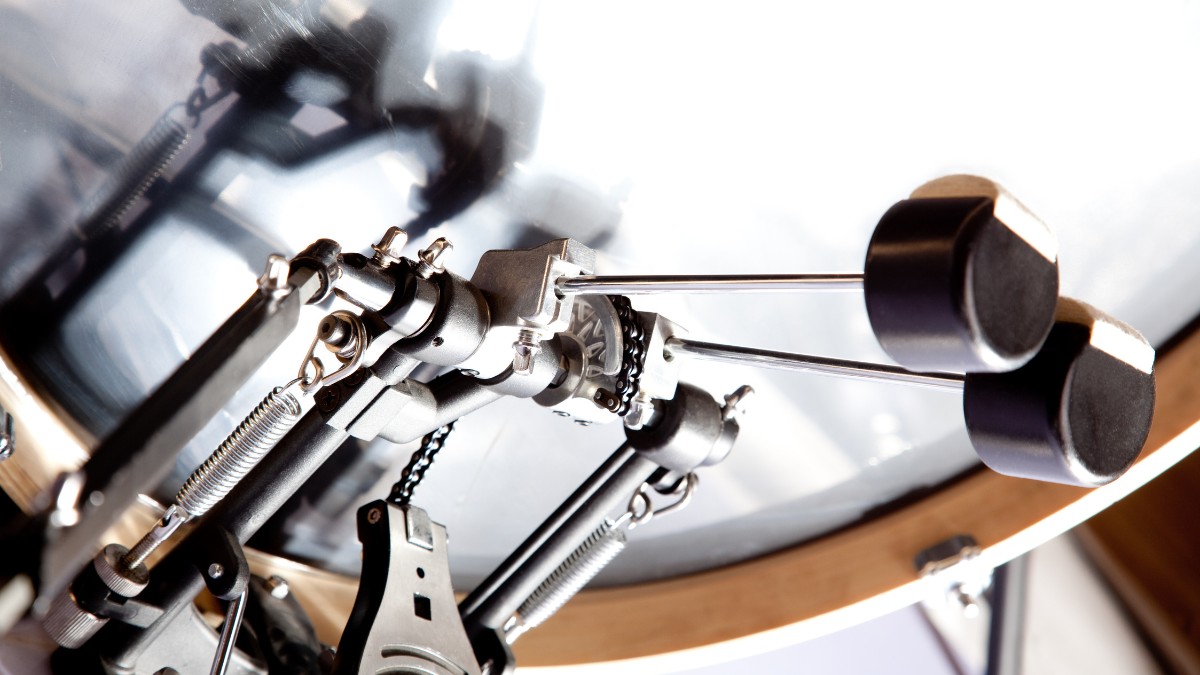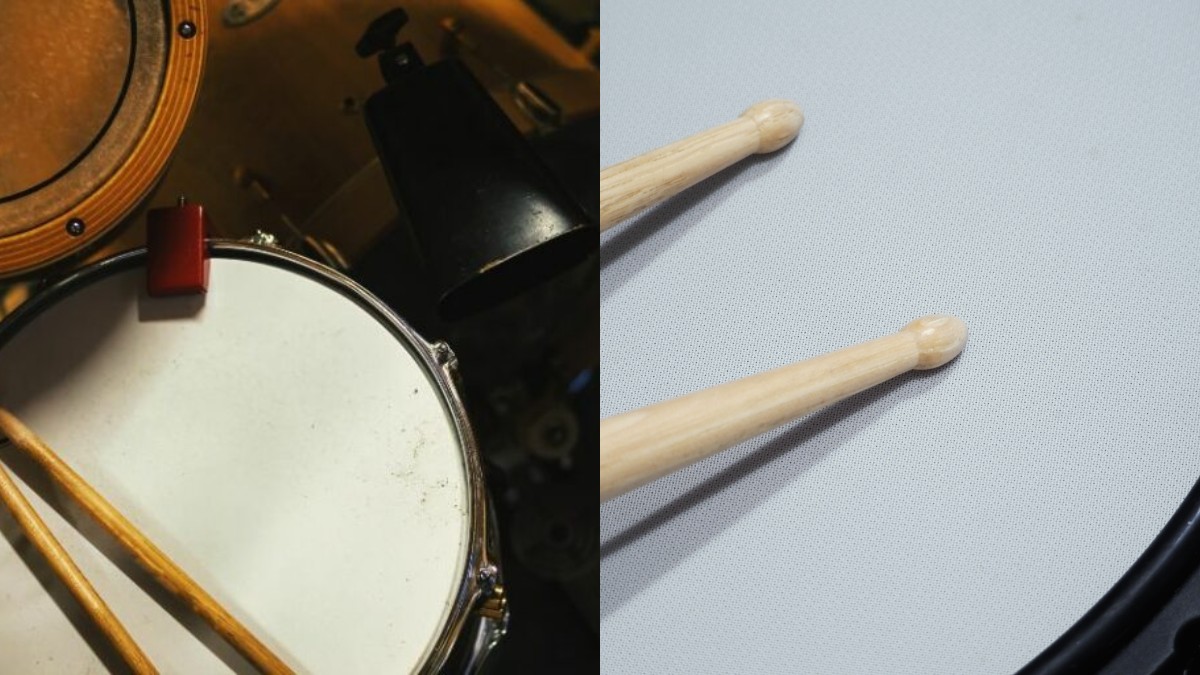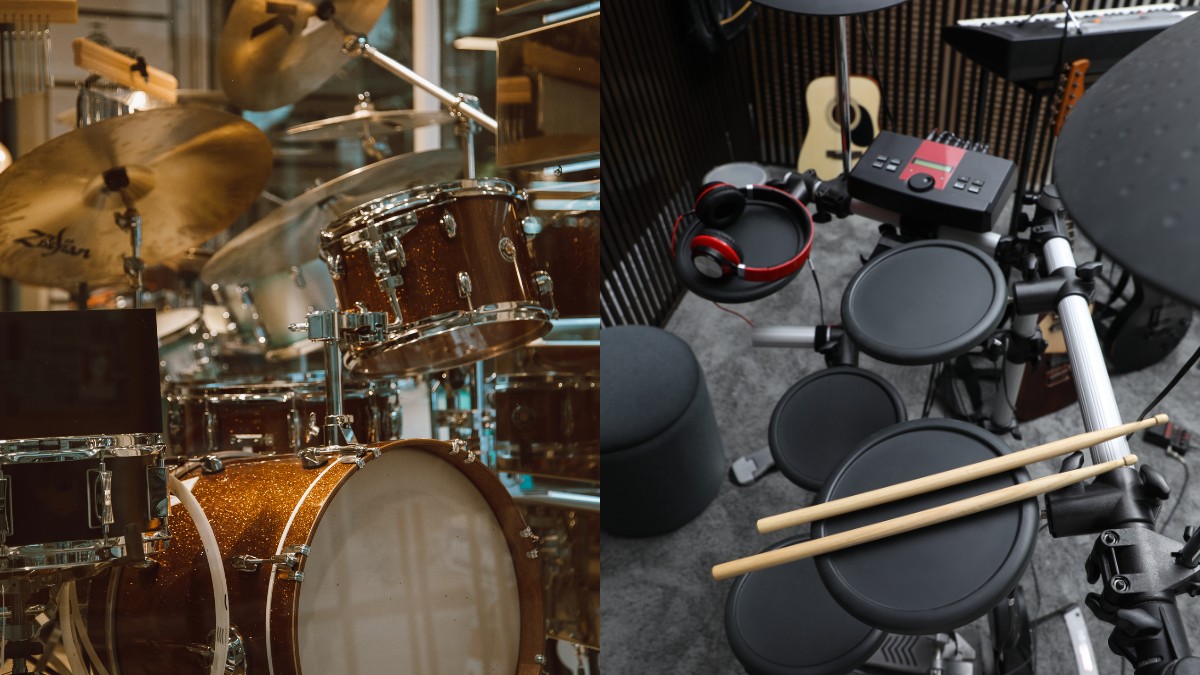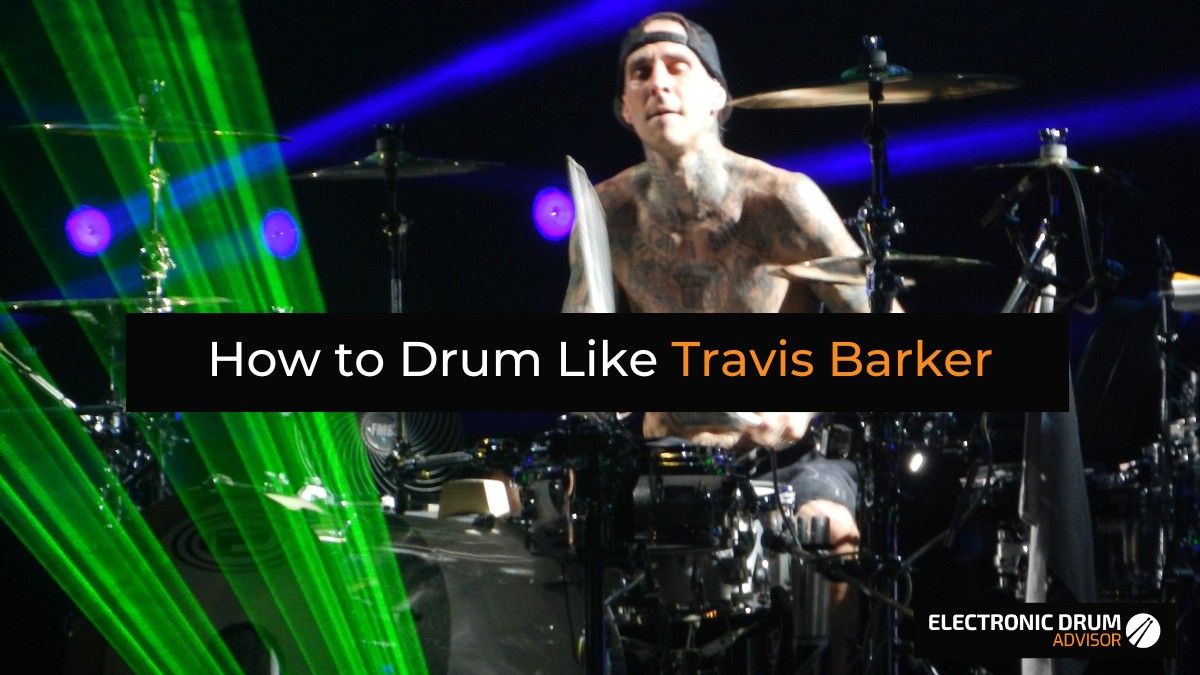How to Read Drum Tabs – Quick Start Guide
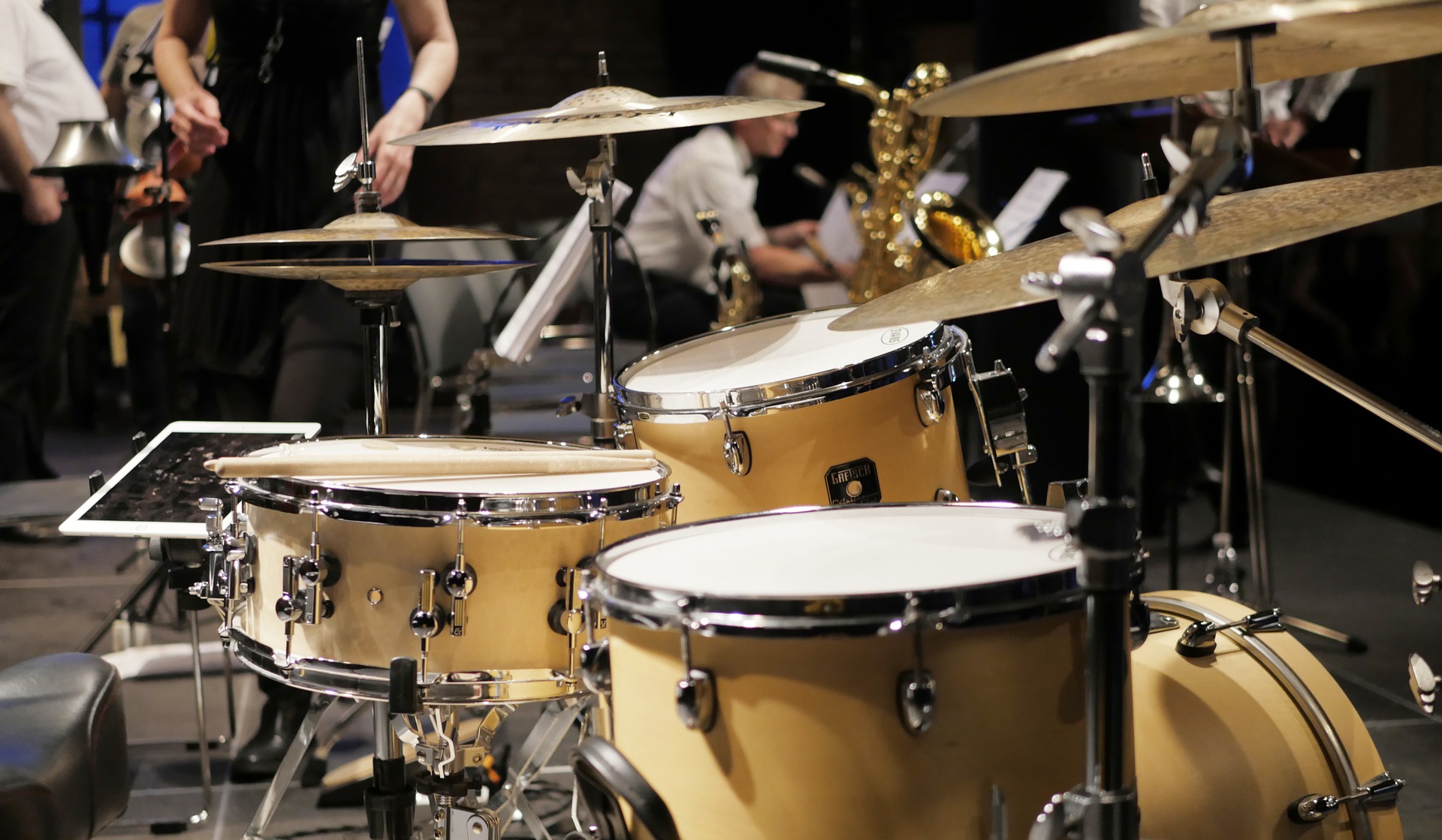
Unlike conventional musical notation, drum tabs offer a simplified and accessible method to read rhythmic patterns and drum beats.
This article will help demystify drum tabs so you can start reading them right away!
Contents
How to Read Drum Tabs – At a Glance

- Organization: Drum tabs are arranged horizontally for time and vertically for the specific drum or cymbal being played. Each line of the tab usually corresponds to a different part of the drum set, indicated by specific letters (e.g., “H” for hi-hat, “B” for bass drum).
- Timing: Most tabs use 16 ‘-‘ symbols to denote each 16th note in a 4/4 time signature, creating one bar of music. Bars are separated by a “|” symbol.
- Notation: Tabs use symbols like “o” for drums and “x” for cymbals. Accent or stronger hits may be indicated with capitalized symbols. Repetition is shown above the tab, such as “repeat x7” for repeating a bar seven times.
- Variations: Drum tab structures can vary, with different symbols or letters representing drums and cymbals. Tabs may also include legends for reference.
- Learning Curve: Reading drum tabs requires practice but provides a valuable skill for drummers. It’s an informal and accessible alternative to sheet music, though learning traditional sheet music is recommended for a comprehensive understanding of drumming.
That’s the high level of it, now let’s keep reading to understand in more detail with some examples.
Btw, if you’re looking to get some drum tabs for songs you like, check out the drums section of Ultimate Tabs, as they have thousands available for you to download and print for free.
Also, if you’re looking to get a head start learning how to play drums then check out Drumeo:
How Drum Tabs Are Structured
Drum tabs horizontally represent time and vertically represent the drum or cymbal being played.
Most music is in 4/4 time, and most tabs are arranged with 16 ‘-‘ symbols that denote each 16th note. It’s best to count this out loud when playing 1 e & a 2 e & a 3 e & a 4 e & a (musical count). 16 musical notes (16th counts), in this case, equal one bar. Each bar is separated with the | symbol.
The far left of the drum tab will usually contain letters that denote which drum or cymbal is being played. The example below is part of the drum tab to “Back in Black” by AC/DC. This was part of the tab made by Jeremy Ferwerda. Get the full drum tab here for free.
In this example,
- C – Crash Cymbal
- H – Hi-Hat
- S – Snare Drum
- B – Bass Drum
On the “timeline,” “o” usually means a drum, and “x” means a cymbal. These are sometimes capitalized to denote an accent or stronger hit.
In this example below, the person that tabbed it makes it easier by including the timing below. This is not always present.


You can listen to the official song below. Read the drum tab above as you are listening. This will quickly help you understand how they work. Notice the “repeat 1x” at the top of the second bar, which denotes that you should play that part again before moving on to the next bar.
Here is another example of a part of Nirvana – “Smells Like Teen Spirit” tab. Here, instead of “o,” the tab composer has decided to notate the drums with the drum’s first letter instead.


As you can see, drum tabs are informal and not always structured in the same way.
The drum and cymbal names can vary, e.g.:
- Ride Cymbal – R or Rd
- Crash Cymbal – C or Cr
- High Tom – St (small tom) or T1 (tom 1)
- Medium Tom – Mt or T2
- Floor Tom – Ft or T3 (low tom)
- Hi-Hat – H or Hh (“x” and “o” refer to a closed or open hi hat)
- Snare Drum – S or Sd
- Bass drum – B or Bd
Repeating Bars
Repeated bars are commonly notated above the rest of the tab information, e.g., “repeat x7” means that this tab should be repeated 7 times before moving on to the next bar.
Drum Tab Legends
Drum tabs sometimes contain a “legend” at the top, which tells you what means what. Either way, they are usually pretty easy to figure out.
For the “Hotel California” drum tab, the tab composer decided to go a bit more detailed and include some extra information regarding dynamics.
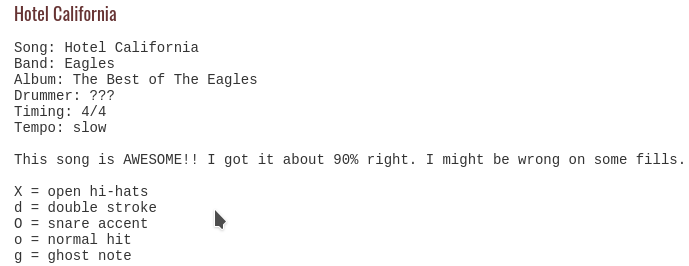

How do Drum Tabs Compare to Sheet Music?
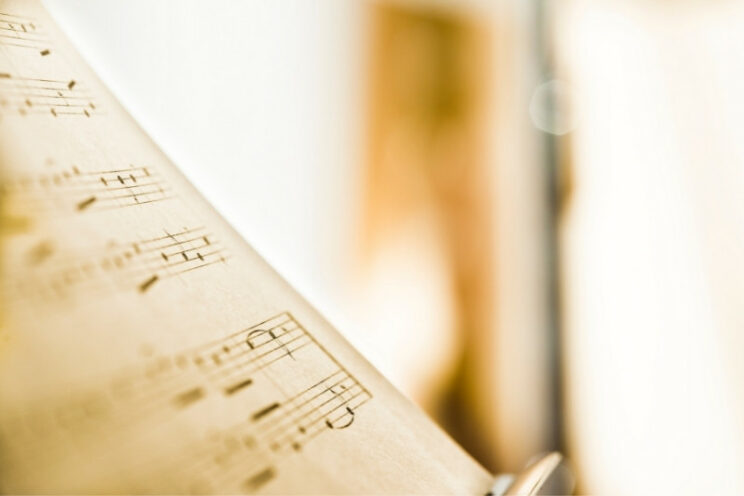

Drum tabs are very useful for beginners, though it’s always recommended to learn how to read drum sheet music as soon as you can, as this is a much more structured and superior method. Any novice can do it.
Sheet music is far better than drum tabs. It’s much more structured and much easier to read once you get the hang of it.
Tabs often require you to study them a bit before playing, particularly as the structure is different for them.
If you want to become a skilled drummer, learning how to read sheet music is a massive advantage. However, drum tabs can be very fun and handy, particularly if you can’t find sheet music for your song.
Quickly Reading Drum Tabs
Reading drum tabs can be a little slow at the start. This is the same for any new skill. You will get a lot faster once you give it some practice time. As with conventional drum lessons, you only get better through time. Check out online paid and free drum lessons here.
We know that it can be a daunting task at first, however, everything can be learned if you practice. In the end, you will bring your whole game up if you learn to successfully read drum tabs or sheet music.
We’ve left out ghost notes, strokes, double stroke, flam, and a cymbal choke for now as this is more than enough about drumtabs for a start.
Summary
Drum tabs are almost always free and offer a great way to learn how the drums are played for any song. They can be fun and handy, but they often require you to study them before playing. However, once you get used to finding a drum tabs database online, they make for an awesome resource. With the internet nowadays, it’s very easy.
Sheet music is much more formal and structured than drum tabs, however, it can be a tedious task trying to find sheet music for your favorite songs. Tabs are in a weird structure, but every new skill starts with the basics.
Reading tabs is good practice for sheet music and vice versa. In the end, everything is possible with some dedication and time put into learning how to read drum tabs or sheet music. Take the time to learn this and pay attention to the rhythm and tempo. That’s why it’s good to practice with a metronome.


